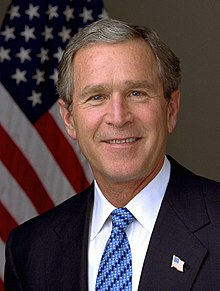Darriyan Kent AP Language: Homework
Everything is an argument notes.
The purposes of argument
The main idea is that there are different types of arguments, and there are different ways to have and argument. There is the right way and the wrong way.
Supporting details
· Arguments (discover a truth) - conviction.
· Persuasion(Know a truth) – Action
Arguments to inform
The main idea of this is that you can use arguments to inform others on what need to inform them on and to persuade on whatever you need.
Supporting details
· Arguments in the press are used to inform or persuade others about a particular thing.
Arguments to convince
The main idea of this is that you can use arguments to convince the reader of whatever you would like to convince the reader of.
Supporting details
· Reports are typically aimed to persuade the readers rather than win out over opponents.
Arguments to explore
The main idea of this was that you realize a problem exists and you want to find some kind of way to solve that existing problem.
Supporting details
· Perhaps the essential argument in any piece is the writer’s assertion that there is an existing problem.
· The writer and reader needs to solve the problem.
Argument to make a decision
The main idea is that you use arguments to make important decisions in your life and you don’t always know right away the answer or outcome of the argument used to make that important decision.
Supporting details
· By the time you have looked at the pros and cons of each alternative, you should be at least a little closer to making a good decision.
Arguments to meditate and pray
The main idea of this is Arguments can be used to try and transform something within you. Arguments of meditating and prayer can help you find your peace of mind.
Supporting details
· Sometimes arguments can take the form of intense meditations on a theme, or prayer. In such cases, the writer or speaker is most often hoping to transform something inside to reach a state of equilibrium or peace of mind.
Occasions for argument
The main idea of this is that there are different occasion for and argument the past, present and the future. The different occasions can also span to more than one category.
Supporting details
· Arguments call for different public occasions.
Arguments about the past
The main idea of this is that arguments in the past rely heavily on precedents actions or decisions in the past.
· Debates that happened in the past are called forensic arguments.
· Forensic arguments rely on evidence and testimony.
Arguments about future
The main idea of this is that arguments of the future are draw in evidence and testimony. It also talked about future arguments relying heavily of arguments from the past.
Supporting details
· Future arguments are called deliberative arguments.
· Deliberative arguments often draw on evidence and testimony.
Arguments about the present
The main idea of this is that arguments of the present are often about contemporary values of society.
Supporting details
· Arguments of the present are called epidictic arguments.
· They tend to be heard at public occasions
Kinds of argument
The main idea of this is that there are different kinds of arguments that address different kinds of issues. It also talked about categories arguments go in and different questions to ask.
Supporting details
· System of categorization is called the stasis theory.
· Questions help determine the contention of the argument.
Arguments of facts
The main idea of this one is That Arguments of facts must be proven.
Supporting details
· Arguments of fact usually involves a statement that can be proven or disproved with specific evidence or testimony.
Arguments of definition
The main idea of this is being able to determine if one known object or action belongs to another. It also talked about how arguments of definition are often left unsolved,
Supporting details
· Issues of Definition Can high consequences.
Arguments of evolution
The main idea of this is arguments of evolution are about quality and that these types of arguments are often forgotten about because they are common.
Supporting details
· Arguments of evolution lead naturally into arguments of quality,
· Arguments of evolution advances by presenting criteria and then measuring the criteria
Proposal arguments
The main idea of this is that a proposal argument is to get people thing about what they would like to do to solve a certain issue.
Supporting details
· A proposal argument often begins with the presentation of research to document existent conditions.
Audiences for Arguments
The main idea of this is that you have to make arguments that appeal to your audiences.
Supporting details
· Appeal to your audiences uses ethos, pathos and logos.
 this relates to pathos because The president has credibility because he was choosen by the people.
this relates to pathos because The president has credibility because he was choosen by the people. this relates to pathos because of the emtion beiging showen by the womans tears.
this relates to pathos because of the emtion beiging showen by the womans tears. This relates to logos because its all about facts.
This relates to logos because its all about facts.